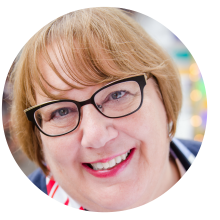
Before the workshop, via the closed Facebook group that’s available to everyone who is registered, we all made plans for bourbon tastings and dinners at restaurants with James Beard award-winning chefs.
We had forged virtual friendships. And now, here we all were, meeting new people with common interests and concerns. The excitement and energy in the room were palpable.
With all the workshop had to offer, on the last day, I was still thinking about how I could make this transition to full-time travel writer happen. Then in the last 30 minutes, Jen Stevens (who you’ll meet at this year’s event) gave us a challenge with what she called “Your 10-Day Success Plan.”
In her challenge, Jen gave us until Oct. 1 to submit an article. That last half hour of the workshop was when things really clicked for me. It gave me a plan to implement the project of becoming a travel writer.
I’m a certified project management professional so I was excited. I spoke that language – it felt like Jen was talking to me.
She reminded us of the biggest secrets:
- Know your audience
- Write short articles with a narrow focus and a strong lead.
- Use simple, direct language.
She said if I did those three things, I would be published. And do you know what? She was right.
I completed those steps, first by choosing a publication.
I reviewed the submissions guidelines and read several articles from the department I wanted to pitch.
I had already traveled to the destination I wanted to write about earlier that summer, so that saved time. I had taken many photos, and I used those images to reminisce about my adventures and write my story.
I wrote my draft and checked the results against the submissions guidelines. (My tip: Always print both the submission guidelines and the article and use the guidelines as a checklist to be sure you’ve met all of the requirements.)
The absolute hardest thing about writing? Getting the courage to hit that “send” button and wait. To get a story published, it needs to get into the editor’s hands. How many finished stories are sitting on your computer? That courage to hit send can take you far.
Then, came the second hardest thing: the waiting. Finally, the email response arrived: “Thank you for the submission. Your writing style is an excellent fit. We would be happy to publish this article.”
An editor had accepted my article, just 10 days after I submitted my story.
By Nov. 1, exactly one month from the Oct. 1 challenge deadline, I was a published travel writer.
Today, I have 21 published stories and I’m under contract for two more. My earnings so far range between $25 and $1,100 per accepted article. Considering I have a demanding full-time job as a senior project manager, in less than eight months, my progress is better than I could have expected.
As I get a few articles accepted ahead, I have to hold back the snowball effect a bit, so I am not over committed. At this point, it’s a great problem to have.
At 61, retirement is on the horizon for me. I look at transitioning to travel writing as a way to continue my traveling lifestyle on a fixed retirement income. I can see these methods will easily provide that for me. I just need to continue to work the plan.
These are some of my tried-and-true tips for transitioning from your current full-time work to living the travel writing dream:
- Plan your work and work your plan. When you have a full-time job, to accomplish a travel writer goal, planning is required. Determine your timeline. Look realistically at your available time blocks and plan the work required.
- Put in the large rocks first and fit the sand between the rocks. What I mean by this is that if you do all of the small items first, you won’t have time left for the tasks that require big blocks of time (like researching publications who might publish your stories). Use your available time wisely and schedule those big chunks of time first.
- Accept that you can’t do it all at once. There’s a natural progression where the next required task becomes evident. Start with focusing on getting those first few clips (and if you’re looking for a quicker turnaround time, consider websites over print). Paid or not, those clips are the required foundational building blocks.
